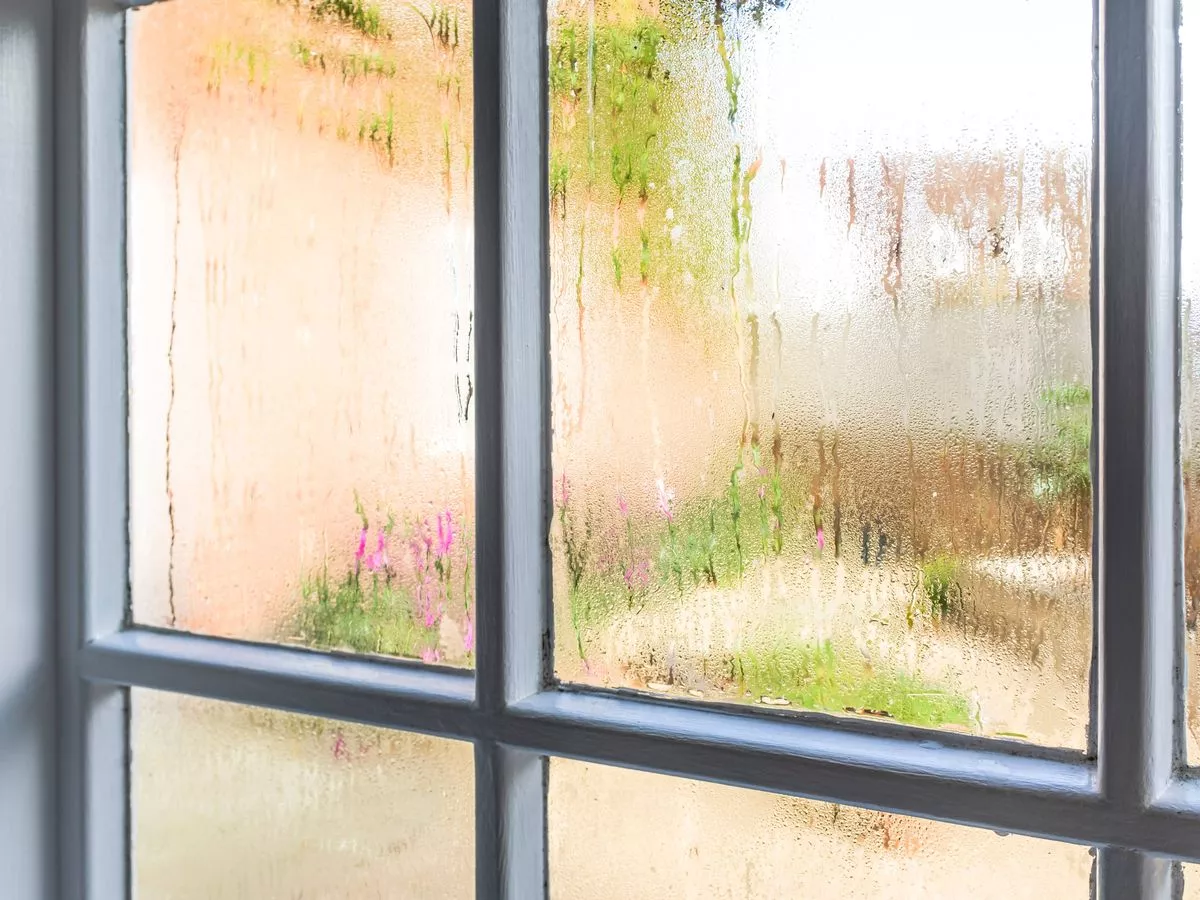Copyright mirror

As the weather turns chillier and households begin firing up their heating systems, countless UK homes are awakening to soaking wet windows and soggy windowsills. Condensation becomes a frequent problem during autumn and winter months. However, whilst the mist on your glass may appear innocent enough, it serves as the initial warning that your property is retaining excessive moisture - and could be silently cultivating mould . Window specialist Nancy Whittington-Coates from Order Electric Blinds revealed that condensation reaches its peak at this time of year because "the cold outdoor air clashes with the warm, humid air inside". Sleeping quarters are especially susceptible to this issue, as Nancy points out that we breathe out moisture whilst we slumber, causing it to accumulate overnight on chilly glass surfaces. When this problem remains unaddressed, the water droplets can penetrate frames, destroy paintwork, and welcome mould spores that worsen allergies and asthma symptoms. "It's something I see every single winter," Nancy said. "People wake up to dripping windows and think it's normal, but over time, that moisture damages your walls, plaster and even your health." Nancy's fundamental principle centres on achieving equilibrium - trapping warmth inside whilst allowing fresh air to circulate. She recommends pulling curtains closed during evenings and throughout the night, but suggests opening trickle vents or slightly cracking a window during daylight hours. "Thick, heavy fabrics act as insulation, reducing heat loss through glass," she said. "But if the room is completely sealed, the warm, moist air has nowhere to escape, so you end up with condensation trapped behind those curtains. "That's why I always tell people to open their trickle vents or slightly pull the curtains back for ten minutes each morning to let fresh air circulate." Nancy continued: "It might sound counter-intuitive to open a window in winter, but it's the best way to flush out humid air. Ten minutes of fresh air won't freeze your house, but it will stop your windows turning into waterfalls." She also suggested purchasing thermal-lined curtains, which "not only keep your heating bills down but help regulate humidity". For south-facing rooms, she advised "drawing them back during sunny spells to let natural warmth flood in, then closing them again as the temperature drops." Nancy explains that extractor fans should operate for at least 15–30 minutes after cooking or showering. "Bathrooms and kitchens are moisture hotspots, so let those fans do their job properly before switching them off," she said. Beyond curtains and vents, some daily habits quietly make the problem worse. "Drying clothes on radiators is one of the biggest culprits," Nancy warned. "You might think it's saving energy, but you're releasing litres of moisture into the air." Rather than this, she recommended waiting for cold but dry days to hang washing outside, or using a dehumidifier or moisture-absorbing bags indoors. "You can get small hanging dehumidifier bags online for just over £1," she suggested. "Pop one near a window or wardrobe and you'll notice the difference." She also points out the kitchen as another potential hazard, saying: "When cooking, always use your extractor hood and cover pans with lids. Those little actions can reduce the humidity that spreads through your home." Beyond comfort and cost, Nancy said that health is the most significant reason to address condensation. "Mould thrives in damp environments, and once it takes hold, it spreads quickly," she cautioned. "You might not even see it at first, as it hides behind furniture or under window sills, but you'll start feeling it in your breathing." According to the NHS , prolonged exposure to mould can lead to respiratory issues, skin irritation, and even exacerbate asthma symptoms. "That's why I always say prevention is much easier than cure. Once mould sets in, it's a nightmare to remove." If you want ideas and inspiration to plan your next UK adventure plus selected offers and competitions, sign up for our 2Chill weekly newsletter here



